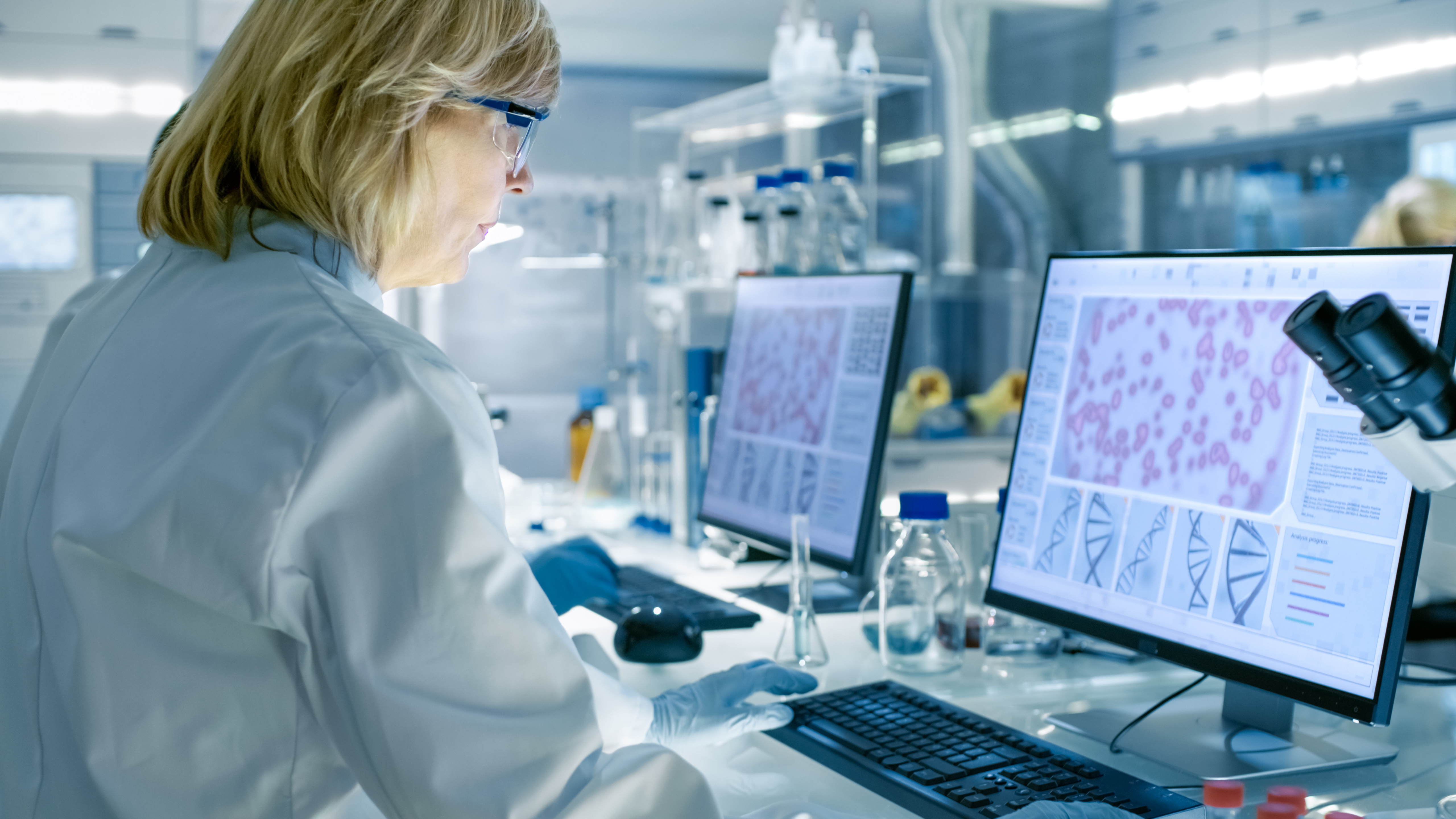



Pirbright's Annual Report highlights investments in disease research and innovation
The Pirbright Institute's Annual Report 2019-2020 showcases a year of scientific progress in viral disease research.The COVID-19 pandemic has thrown into sharp focus the importance of the research that Pirbright carries out on the border between animal and human disease, and in pushing forward One Health Agenda research.
The annual report highlights crucial work that the Institute contributed to in the UK’s COVID-19 diagnostic and surveillance effort, including the loan of our specialist equipment and by the volunteering of our highly trained diagnostics staff. Collaborative work also commenced with the University of Oxford, Jenner Institute and Imperial College London to test three different vaccine candidates in pigs.


“The continuing emergence of new viral diseases, such as COVID-19, demands robust research and collective efforts” said Pirbright’s Director, Professor Bryan Charleston, in his foreword to the Annual Report titled A future free from disease. “Pirbright’s global collaborations with research institutes, universities, science networks, biotech and industry, together with the support received from leading funding bodies, means that we are better equipped than ever to be able to support the UK’s and the wider global response to new and existing diseases.”
Pirbright’s latest contributions to disease eradication are featured in the report, exemplified by the destruction of the final stocks of rinderpest virus held in the World Reference Laboratory at the Institute. This action paves the way for other facilities to do the same to ensure the world remains free from rinderpest disease, which was declared to be eradicated in 2011. Innovations in vaccine research also take the spotlight, with studies towards a vaccine against African swine fever, a deadly disease of pigs, generating encouraging results. Animal vaccine trials for Nipah virus and Rift Valley fever virus, both zoonotic diseases that infect animals and humans, have been positive too.
The report details the extensive funding obtained in 2019-2020, including the successful mid-point review of Pirbright’s Institute Strategic Programme Grants (ISPGs) five-year funding cycle. The ISPGs are funded by the Biotechnology and Biological Sciences Research Council (BBSRC), part of UK Research and Innovation (UKRI), which last financial year strategically invested £25.2 million in supporting Pirbright’s research.
Further funding from the Bill & Melinda Gates Foundation has allowed Pirbright to take on ambitious initiatives such as the Livestock Antibody Hub, that enables researchers at the Institute to share expertise and generate tools and resources for the veterinary research community as part of efforts to progress the One Health Agenda. Large grants for improving foot-and-mouth disease and bluetongue diagnostic capabilities from the Department for Environment, Food and Rural Affairs (Defra) also highlight the essential role Pirbright plays in protecting the UK from outbreaks through new innovations.
Professor John Stephenson, Chair of Pirbright’s Trustee Board, remarked: “The continued investment in Pirbright is evidence of the high calibre research that the Institute contributes to tackling viral diseases. As the COVID-19 pandemic has highlighted so vividly the link between animal and human diseases and health, I have no doubt that Pirbright’s reputation as a centre of excellence in research and diagnostics of viruses that infect livestock and people will continue to grow.”


Partnerships with industry have delivered significant milestones for the Institute, for example, the design of a new effective and affordable vaccine for foot-and-mouth disease has been licensed to MSD Animal Health. Closer relationships with fellow research institutes will advance Pirbright’s scientific developments further, such as the collaboration with the Electron Bioimaging Centre at Diamond Light Source that is enabling Institute scientists to study viral diseases in greater detail.
Noticeable throughout the report are the images taken in 2019 before the COVID-19 pandemic. Although these appear quite alien in the current world of social distancing, photos of large in-person meetings and training ran by Pirbright scientists demonstrate their commitment to sharing knowledge and expertise with participants of global consortiums and networks, such as DEFEND, the Gnatwork and the UK-China Centre of Excellence for Research on Avian Diseases (CERAD).
Pirbright’s campus development continues apace, made possible by significant strategic investment from BBSRC UKRI. New facilities are highlighted in the report, such as Pirbright’s purpose-built Specific Pathogen Free (SPF) poultry facility, The Houghton Facility and The Brooksby Building, a high containment laboratory that will provide the UK with the capacity to study infectious viruses of large livestock as well as zoonoses that can spread from animals to people. The COVID-19 pandemic has brought in sharp relief the importance of the UK’s preparedness in diagnostics and surveillance in order to prevent, diagnose and control new and emerging infectious viral diseases.









